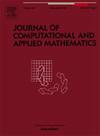Calibration and option pricing with stochastic volatility and double exponential jumps
IF 2.1
2区 数学
Q1 MATHEMATICS, APPLIED
Journal of Computational and Applied Mathematics
Pub Date : 2025-02-20
DOI:10.1016/j.cam.2025.116563
引用次数: 0
Abstract
This work examines a stochastic volatility model with double-exponential jumps in the context of option pricing. The model has been considered in previous research articles, but no thorough analysis had been conducted to study its quality of calibration and pricing capabilities thus far. We provide evidence that this model outperforms challenger models possessing similar features (stochastic volatility and jumps), especially in the fit of the short term implied volatility smile, and that it is particularly tractable for the pricing of exotic options from different generations. The article utilizes Fourier pricing techniques (the PROJ method and its refinements) for different types of claims and several generations of exotics (Asian options, cliquets, barrier options, and options on realized variance), and all source codes are made publicly available to facilitate adoption and future research. The results indicate that this model is highly promising, thanks to the asymmetry of the jumps distribution allowing it to capture richer dynamics than a normal jump size distribution. The parameters all have meaningful econometrics interpretations that are important for adoption by risk-managers.
求助全文
约1分钟内获得全文
求助全文
来源期刊
CiteScore
5.40
自引率
4.20%
发文量
437
审稿时长
3.0 months
期刊介绍:
The Journal of Computational and Applied Mathematics publishes original papers of high scientific value in all areas of computational and applied mathematics. The main interest of the Journal is in papers that describe and analyze new computational techniques for solving scientific or engineering problems. Also the improved analysis, including the effectiveness and applicability, of existing methods and algorithms is of importance. The computational efficiency (e.g. the convergence, stability, accuracy, ...) should be proved and illustrated by nontrivial numerical examples. Papers describing only variants of existing methods, without adding significant new computational properties are not of interest.
The audience consists of: applied mathematicians, numerical analysts, computational scientists and engineers.

 求助内容:
求助内容: 应助结果提醒方式:
应助结果提醒方式:


